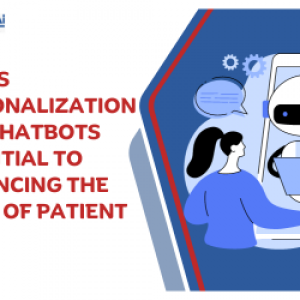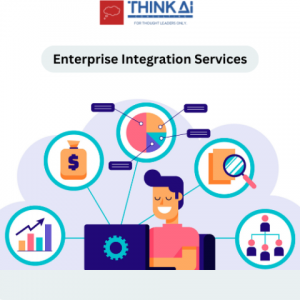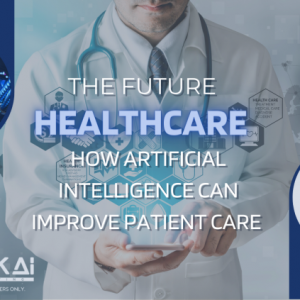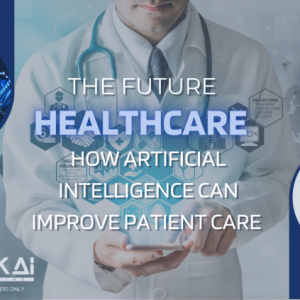In the dynamic landscape of healthcare, the advent of Smart Factories marks a transformative era where artificial intelligence (AI) seamlessly integrates into manufacturing facilities, reshaping the production paradigm with unprecedented efficiency and precision.
The convergence of innovative technologies has given rise to a new frontier where AI orchestrates and optimizes manufacturing processes within healthcare facilities. This paradigm shift not only accelerates the production of medical devices and pharmaceuticals but also introduces a level of customization and adaptability previously unimaginable.
In this article, we’ll delve into the realm of Smart Factories in healthcare unveiling the profound impact of AI integration, paving the way for enhanced productivity, streamlined operations, and, ultimately, advancements in patient care.
What Are Smart Factories?
Smart factories, also known as intelligent manufacturing facilities, leverage advanced technologies like artificial intelligence (AI), robotics, and the Internet of Things (IoT) to optimize production.
Smart factories utilize networked systems and smart sensors to monitor all aspects of the manufacturing process. Connected machines share data in real-time, adjusting automatically to changes on the factory floor. This allows for highly flexible manufacturing, reduced waste, and improved quality control.
Some of the key technologies powering smart factories include:
· AI and machine learning algorithms analyze huge amounts of data to optimize complex processes and predict maintenance needs. AI can detect patterns that humans might miss, learning and improving over time.
· Advanced robotics, including collaborative robots that work safely alongside humans, handle repetitive and dangerous tasks with high precision. Robotics boost productivity and quality.
· The IoT connects machines, devices, and computers via the Internet, sharing data that provides insights into the entire manufacturing chain. This connectivity and visibility enable continuous monitoring and optimization.
· Cloud computing provides the infrastructure to collect, store, and process the huge amounts of data generated in smart factories. The cloud also enables AI systems and makes information accessible across locations.
· 3D printing allows for rapid prototyping, mass customization, and on-demand production of parts. 3D printers can create complex components that are difficult to make using traditional techniques.
With the integration of these advanced technologies, smart factories are revolutionizing manufacturing and ushering in a new era of automation, connectivity, and efficiency. The future of intelligent manufacturing is here.
Benefits of AI Integration in Healthcare Manufacturing
The integration of artificial intelligence (AI) in healthcare manufacturing facilities, known as smart factories, provides many benefits like:
Cost Savings
AI technologies ultimately drive down costs in healthcare manufacturing through increased efficiency, less waste, tighter quality control, and fewer safety incidents. The savings can then be passed onto customers and patients through lower healthcare costs and more affordable treatments. The initial investment in AI and smart factory infrastructure also pays off over time.
Improved Quality
AI systems enable real-time monitoring and anomaly detection to identify defects and quality issues during production. Computer vision powered by machine learning can inspect components at super-human speeds with high precision. When quality risks are detected, the systems can alert human technicians immediately so corrective actions can be taken. This results in higher-quality products and fewer recalls.
Increased Production
AI technologies like machine learning and predictive analytics allow smart factories to analyze historical data from the manufacturing process to identify areas of improvement. They can then optimize workflows and quality control procedures to boost productivity and reduce waste. Robotic process automation also speeds up repetitive, mundane tasks to free up human workers for higher-level jobs.
Data-Driven Insights
AI gathers data like a squirrel hoarding nuts for winter. Put that data to work for insights into improving processes, developing new products, and discovering unmet customer needs. The future is now, and the data will show you the way.
While the robots do the heavy lifting in your futuristic factory of wonders, you can focus on more strategic priorities. With AI taking care of the details, the future of smart healthcare manufacturing looks bright. The robots are here to help, and the benefits are hard to beat.
Applications of AI in Pharmaceutical and Medical Device Manufacturing
AI is enabling the automation and optimization of many processes in pharmaceutical and medical device manufacturing. This includes:
Process Monitoring and Control
AI systems can monitor equipment and processes in real-time to detect anomalies and ensure quality. They analyze sensor data to identify variations that could impact safety or effectiveness. If issues are detected, AI can automatically make minor adjustments or alert human technicians to take corrective actions. This leads to higher quality products and less waste.
Streamlining Production
AI systems can optimize your production processes to reduce waste and maximize output. They monitor everything from raw materials to equipment to the steps required to produce each product. The AI identifies inefficiencies and opportunities for improvement and then recommends changes to streamline the process. It may suggest altering temperatures, speeds, batch sizes, or the order of steps. By implementing these recommendations, factories have increased production by up to 50% while reducing waste.
Automated Inspection
Cameras and computer vision are used to automatically inspect products and packaging for defects. AI is trained on thousands of images to identify anomalies, damage, contaminants, or labeling issues. This reduces the resources needed for manual visual inspection and helps ensure every product meets strict quality standards before distribution. Automated inspection is often faster and more consistent than human inspection.
While AI will undoubtedly transform tomorrow’s smart factories, today it serves as an extra set of hyper-vigilant eyes and a super-efficient brain to boost productivity, cut costs, and improve quality.
Implementing AI Quality Control and Supply Chain Management
Implementing AI for quality control and supply chain management in smart factories can optimize several processes including:
Quality Control
AI systems with computer vision can inspect products for defects during and after the assembly line using cameras and image recognition. AI learns what constitutes a “good” product versus a defective one by analyzing thousands of sample images. It can then flag or even stop the line when it detects issues, allowing for prompt corrections. This reduces waste by catching mistakes early.
AI also monitors equipment and production environments to detect irregularities. Sensors gather data on temperature, humidity, vibration, and other metrics, which AI analyzes to identify patterns indicating a potential problem. For example, a spike in vibration could signal a failing part needing replacement. Preventive maintenance avoids unplanned downtime and lost productivity.
Supply Chain Management
AI helps manage the flow of materials and components through the supply chain to ensure goods are available when needed on the production line. AI uses historical data and predictive algorithms to forecast demand more accurately, optimizing inventory levels. It can also track the location and ETA of supplies in transit to anticipate and mitigate the impact of any shipping delays.
Integrating AI for quality control and supply chain management leads to greater efficiency, lower costs, and improved customer satisfaction through higher quality and on-time delivery. The future of smart factories depends on the strategic implementation of AI and its ability to enhance existing systems and processes. With the support of AI, manufacturers can achieve new heights of operational excellence and competitiveness on a global scale.
AI-Enabled Predictive Maintenance in Healthcare Factories
Gone are the days of run-to-fail equipment and hastily assembled repair crews. Now an algorithm can tell you when your MRI machine or autoclave is going to conk out before it even realizes it wants to.
AI systems analyze reams of data from sensors monitoring your equipment’s performance, usage, and environment. They detect patterns that signal when key components are likely to fail or malfunction. Then they alert your maintenance teams to make repairs or replacements before the equipment goes bad. Itt also offers:
· More uptime and improved productivity, throughput, and patient experience.
· Predictive maintenance which is cheaper than reactive repairs and part replacements.
· Critical equipment is serviced before hazardous failures occur.
· Regulatory standards, proper maintenance and record-keeping. Predictive maintenance helps ensure compliance.
Of course, as with any technology, there is a learning curve. Your teams will need to adjust to the AI system and trust what it forecasts. The AI itself will require tweaking to optimize for your facility’s specific equipment and usage patterns. However once fully deployed, predictive maintenance can transform your operations.
Improving Efficiency and Productivity With AI
AI and machine learning are enabling smart factories to optimize efficiency and boost productivity in the healthcare industry. By integrating AI into manufacturing processes, facilities can:
Reduce Errors
AI-powered systems with computer vision and sensor fusion can detect defects and flaws in components with a high degree of accuracy. This helps minimize waste and prevent faulty products from reaching customers. AI also reduces human error by automating quality assurance tasks like inspection and testing.
Increase Output
AI optimizes productivity by streamlining workflows and automating repetitive, mundane tasks. Robotic process automation, for example, can take over routine jobs like packaging, sorting, and moving materials. This frees up human workers to focus on higher-value, more engaging work. AI also enables predictive maintenance, reducing unplanned downtime and keeping equipment and systems running efficiently.
Improve Planning
AI provides data-driven insights to enhance planning and decision-making. Machine learning algorithms can detect patterns in historical data to forecast demand more accurately. This helps ensure an adequate supply of components and materials to meet production needs. AI also provides real-time visibility into operations, allowing managers to identify bottlenecks, reallocate resources, and adjust maximize throughout.
Enhance Collaboration
AI facilitates collaboration between humans and machines and among human team members. Cobots, or collaborative robots, work side by side with people, taking over repetitive tasks so workers can focus on critical thinking jobs. AI also connects various teams and systems across the organization through platforms for data sharing, communication, and coordination. This breaks down silos and helps orchestrate end-to-end processes.
By leveraging AI in these ways, smart factories in healthcare gain a competitive advantage through leaner, faster, and more flexible manufacturing. Patient outcomes are improved as high-quality products can be delivered more quickly and at lower cost. At the same time, AI augments human capabilities rather than replacing them, creating more engaging jobs and a safer, more productive work environment overall.
Case Studies of AI Implementation in Healthcare Manufacturing
Smart factories that implement AI and automation in healthcare manufacturing can gain significant benefits. Several case studies showcase how AI integration has improved processes and outcomes.
Pfizer: Automated Manufacturing of Pre-Filled Syringes
Pfizer implemented automated manufacturing systems to produce pre-filled syringes for several biological medicines. The highly automated facility reduced human interventions, improved product quality, and increased productivity. Automation and AI-optimized processes for syringe filling, inspection, labeling, and packaging.
Novartis: Digital Twin Modeling
Novartis created a “digital twin” of a manufacturing facility to simulate how new equipment or process changes might impact productivity and quality. The digital replica incorporated historical data from the physical plant to predict outcomes and optimize processes before implementing changes on the factory floor. This proactive approach using AI and predictive modeling reduced risks in process improvements.
Johnson & Johnson: AI for Deviations Detection
Johnson & Johnson deployed an AI system to detect anomalies and deviations on a manufacturing line for contact lenses. The AI monitors numerous data streams in real-time to identify irregularities that could impact quality or compliance. The system has significantly improved detection rates over human monitoring alone, allowing interventions to correct issues faster. This application of AI enhances quality assurance and risk mitigation.
GSK: Automated Vial Filling
GlaxoSmithKline implemented robotic vial filling technology for injectable medicines, including a system that can fill up to 350,000 vials per day with a high degree of accuracy and precision. Automated vial filling, inspection, and packaging have reduced risks of human error, increased productivity, and improved quality and compliance.
In summary, healthcare companies are achieving major benefits from smart factories and AI in manufacturing through automating processes, creating digital twins, improving quality assurance and risk mitigation, increasing productivity, and optimizing workflows. The case studies presented here demonstrate a range of implementations for biologics, medical devices, and pharmaceuticals.
Challenges of Adopting AI in Traditional Facilities
The road to AI adoption in traditional manufacturing is paved with obstacles such as:
Data Requirements
AI systems rely on huge amounts of data to learn and improve. Manufacturing companies must have systems in place to capture and aggregate data from all areas of operations. They need data on inputs, outputs, processes, equipment performance, customer requirements, and more. For companies without a robust data infrastructure, building one can be time-consuming and expensive. They must also ensure they have high-quality, well-organized data that is properly labeled to train AI models effectively.
Integrating AI with Legacy Systems
Most traditional manufacturing facilities have legacy equipment and computer systems that are not easily compatible with modern AI technologies. Integrating AI may require upgrading equipment, refining processes, and revamping existing systems. This can disrupt operations and impact productivity in the short term. Companies must develop a thoughtful integration plan to migrate to AI in a phased approach that minimizes disruptions. They should start with targeted AI pilots before widescale implementation across the organization.
Workforce Challenges
Introducing AI may be met with resistance from employees who are hesitant to adopt new technologies. Companies must invest in retraining workers on both technical and soft skills to work collaboratively with AI systems. They should also redefine roles and responsibilities, as AI takes over certain routine tasks. With proactive change management, companies can gain buy-in from employees and ease the transition to working with AI technologies.
The Future of AI in Healthcare Manufacturing: FAQs
So, you’ve heard the hype about smart factories and AI in healthcare manufacturing and have some critical issues. We’ve got the answers—and a hefty dose of real talk.
Are robots going to take over healthcare manufacturing jobs?
In a word, no. While AI and automation will transform many jobs, human workers will still be vital. Robots can handle repetitive, routine tasks, freeing up humans for more complex, judgment-based work. Many new jobs will also be created, such as robot programmers and technicians. The key is that workers adapt their skills. If you go into this field, focus on developing skills that artificial intelligence struggles with—creativity, problem-solving, empathy, and collaboration.
Will AI make healthcare manufacturing more efficient and cost-effective?
Yes, AI has significant potential to optimize healthcare manufacturing. AI can analyze huge amounts of data to predict demand, improve planning, and streamline supply chains. AI-powered robotics and automation can take over repetitive, mundane tasks, reducing costs and errors. AI may also enable more personalized, customized healthcare products tailored to individual patients’ needs. These efficiencies can make healthcare more affordable and accessible.
How will AI transform healthcare manufacturing processes?
AI will automate and optimize many manufacturing processes. AI-powered sensors, computer vision, and robotic systems can fully automate production lines with limited human intervention. AI can also enhance more traditional processes through predictive demand forecasting, virtual prototyping of new products, and quality/defect detection using machine learning models. Additive manufacturing enabled by AI may eventually allow on-demand, decentralized production of healthcare products.
How can companies prepare for the future of AI in healthcare manufacturing?
To leverage the benefits of AI, healthcare manufacturers should invest in data infrastructure, AI talent, and retraining programs. They need to adopt an experimental mindset, start AI projects, learn from failures, and scale successes. Manufacturers should also build strategic partnerships with AI companies, research institutions, and startups to access new technologies and talent. Strong leadership, a vision for how AI can transform the business, and a flexible corporate culture will be key to success.
By anticipating common questions about how AI may shape the future of healthcare manufacturing and taking proactive steps to prepare, companies can harness the power of artificial intelligence to improve lives. The future remains uncertain but promising.
Conclusion
As artificial intelligence becomes more deeply integrated in healthcare manufacturing, the future looks increasingly automated and data-driven. Smart factories powered by AI and robotics will transform how medical supplies and equipment are produced, enabling greater speed, customization, and quality control. For healthcare organizations, this means higher efficiency, lower costs, and the ability to provide more personalized products to patients.
These technological advancements come with new challenges around data privacy, job security, and oversight that companies must consider ensuring AI is implemented responsibly. Overall, AI-powered smart factories are poised to revolutionize healthcare manufacturing for the better if we’re able to thoughtfully manage their risks and rewards. The future is automated, but also bright.
Dive into the future of healthcare manufacturing! Subscribe to my LinkedIn Newsletter, and stay informed on AI’s game-changing role, latest trends, and success stories.
Join industry leaders shaping the healthcare manufacturing landscape. Subscribe now for a front-row seat to the revolution!





